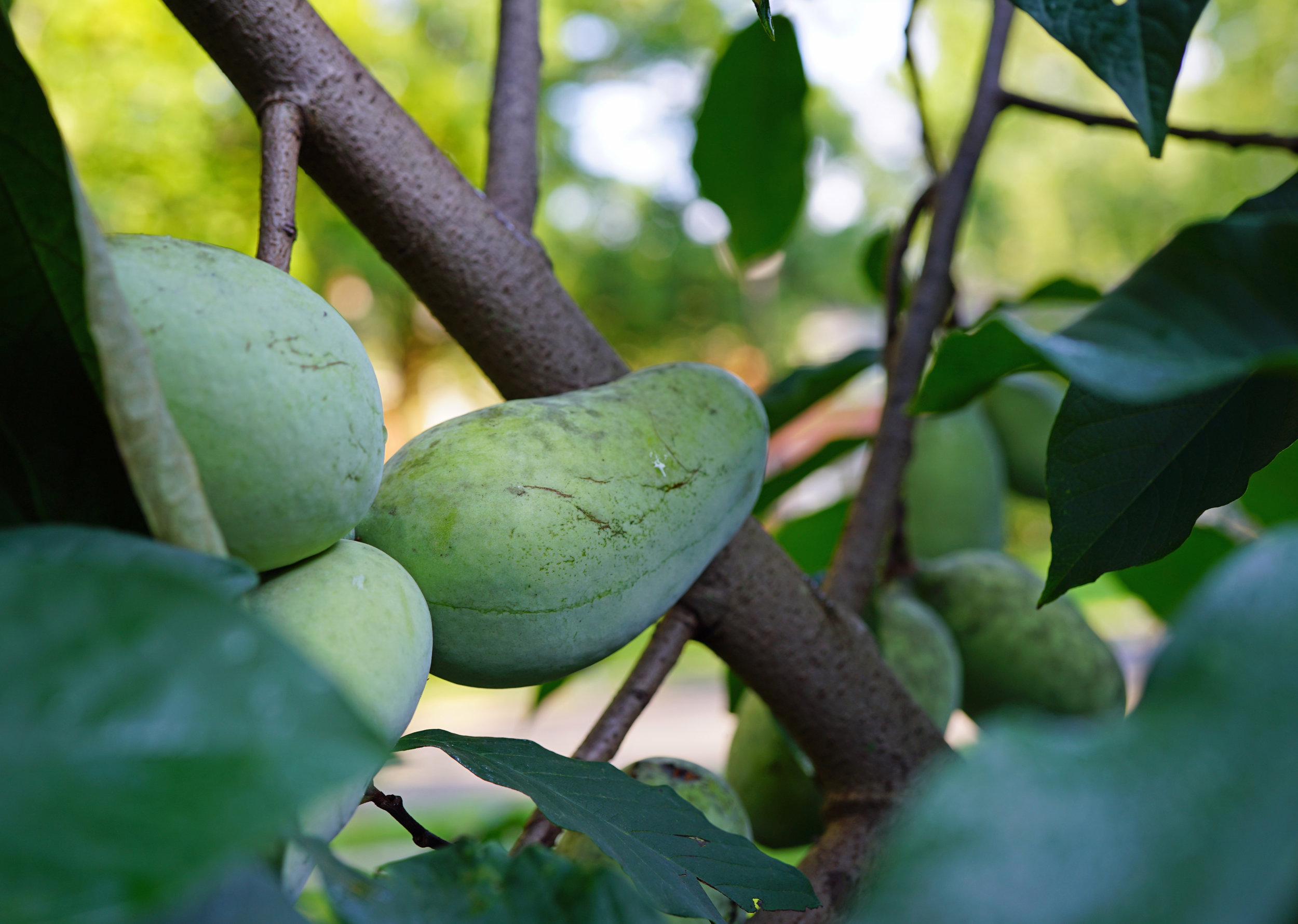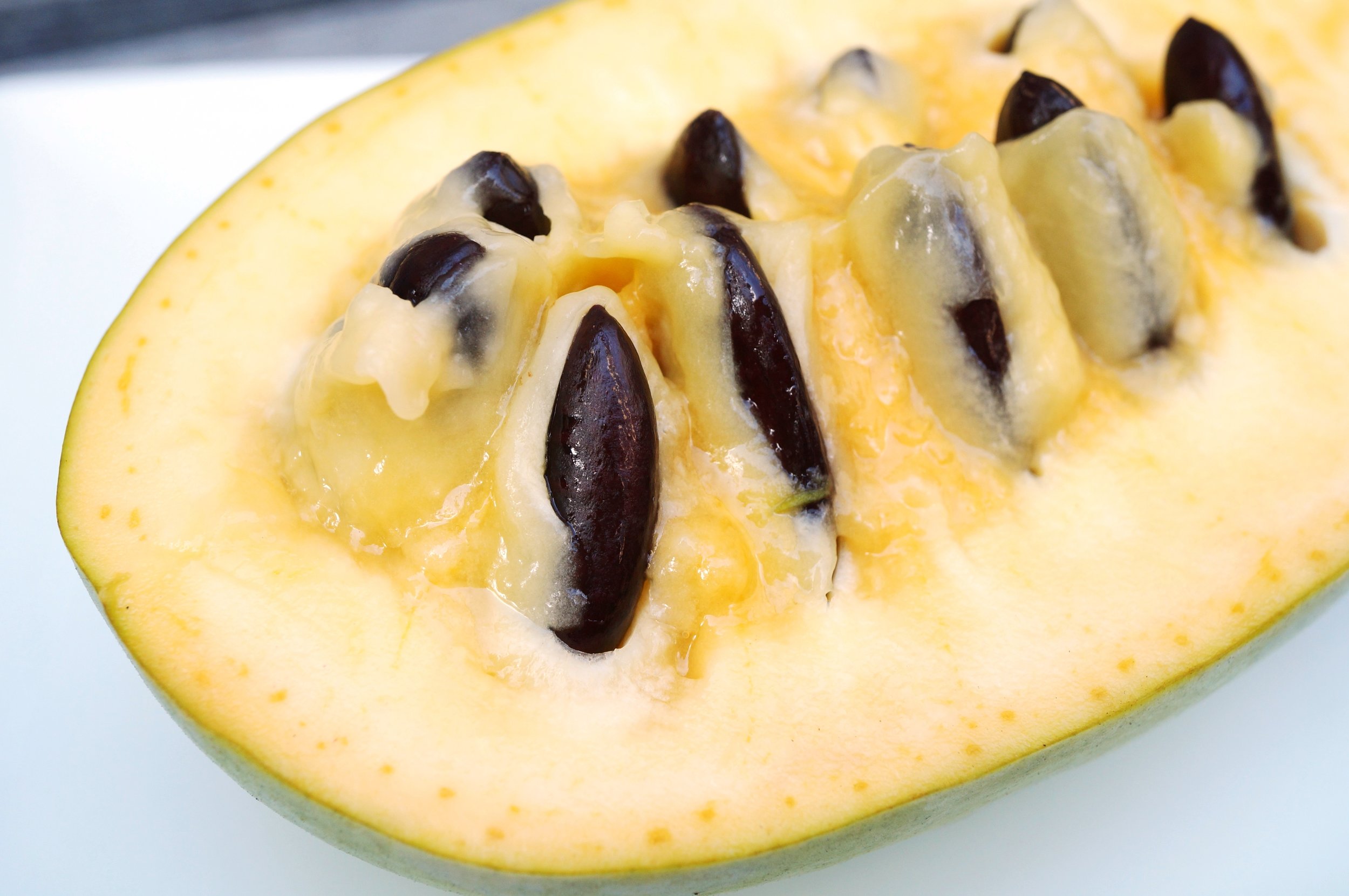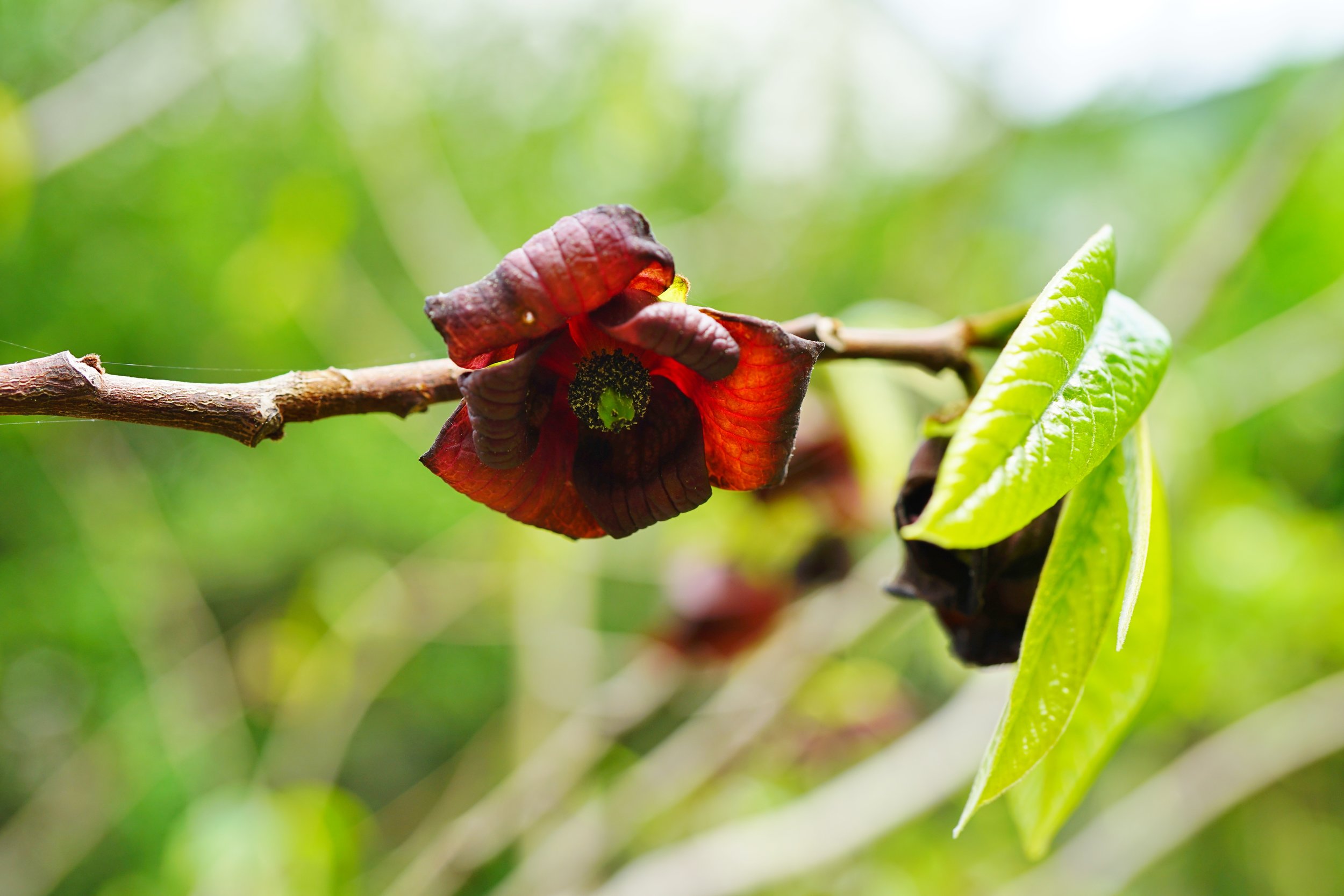“Stop and Notice Me” said the Pawpaw Tree
By José Fernández
Last weekend I was in southern Ohio, working on a personal building project that needs to reach a certain stage of completion while the dry summer weather persists. Usually a time of relaxation, my weekend visits to this site have become slightly stressful due to time constraints. As I moved about the building frame, I kept dodging low branches from several Pawpaw trees growing about the place.
The plan is to remove the trees eventually, but my father and I are partial to the fruit, so we are waiting until after the harvest before we cut them down. We are also a bit attached to these trees since they are the last remnant of a group of volunteer seedlings we left in place 10 years ago, and we have enjoyed lots of fruit and shade from them in the last two years.
My head down, I moved about the building: Fetch the hammer; back around for the level; measure from here...
BUMP. Just ran into a green pawpaw, but kept my head down, busy with the task at hand.
30 seconds later…
BUMP. Ran into the same fruit again. Continued doing what I was doing, when about a minute later…
BUMP. The exact same fruit, exact same spot on my head. I’m feeling so pressed for time that I am distracted and not really connecting with the moment.
After arriving back home the next day, that pawpaw kept bumping into my thoughts, so I took some time to pay attention to it.
“Notice Me” says the Pawpaw Tree
Asimina triloba, Common Pawpaw or Custard Apple (see Michael Dirr, Manual of Woody Landscape Plants). I have been told this tree produces the largest native fruit in North America. My father and I like the tree because it has a tropical look to it – large leaves somewhat irregularly attached in clusters. The flowers appear early in spring, before other trees and plants have started leafing out. They are easy to miss because they are not very large, maybe an inch in diameter, and they are a purplish brown color.
Usually found as an understory tree, it also does well in full sunlight. I have seen it growing in well-drained uplands, but have also seen entire stands of large trees (30-40 feet is large for this species) growing in bottomlands along streams and rivers.
The fruit is a large, curious thing that also makes one think of tropical fruits when trying to describe it. There is some variation in taste and color depending on what part of Ohio the trees are growing in, based on my experience.
There is much more I can say about this tree, such as mentioning the unique caterpillars that feed on the foliage, festivals that are held to celebrate the fruit, and the time TJ Nagel (of Russell Tree Experts) brought me in a prize fruit which mysteriously went missing before I got my hands on it. But since trees serve to ground me in the moment, as well as raising me above the moment, I can’t help but feel that this fruit was bumping me in the head, repeatedly, to let me know it was time to stop for a minute.
Things have been unusually hectic this season, and the last several months have blown by in a blur of work, travel, projects – each pulling in a different direction. One can only be pulled so far before something starts to give. With me, that something is peace, sister to joy. And last weekend, one tree bent down to tap me on the head. Three times. To tell me to hit the pause button.
Work is still as busy as ever. I have unfinished landscaping and building projects at home. My new trees need to be watered every few days to get them through this drought. The new semester starts today. I would like to spend some more time with my wife and family. I would like to get some use out of my mountain bike. I have a stack of books I keep falling asleep under.
When will it stop? Well, it won’t, really. But I am thankful for a pawpaw giving me a gentle knock on the head. “Notice me”, it said. “Stop and notice me”.
So here I am.
Get out this September and sample a pawpaw or two. You might not like it, but it’s worth trying. While you are there under the tree, take a look and a listen; think about something you love, or someone you miss. Don’t wait for a bump on the head to bring you back to what matters.
Wishing you all the best,
José Fernández | Regional Manager, Russell Tree Experts
José became an ISA Certified Arborist® in 2004, and a Board-Certified Master Arborist® in 2015. Currently he is enrolled at The Ohio State University pursuing a Master’s Degree in Plant Health Management. José likes working around trees because he is still filled with wonder every time he walks in the woods. José has worked at Russell Tree Experts since 2012.
Join Me!
On Friday, September 13th, at 9AM join us for a 90-minute tree tour through Indian Run Falls with José Fernández of Russell Tree Experts. José (ISA Board Certified Master Arborist®) will take you into the woods and introduce you to the many trees of Central Ohio. You'll learn a TON about each tree (root systems, bark, growth speeds, fruits, and more!) and in the end, you'll have an even greater appreciation for nature and the trees around you!







